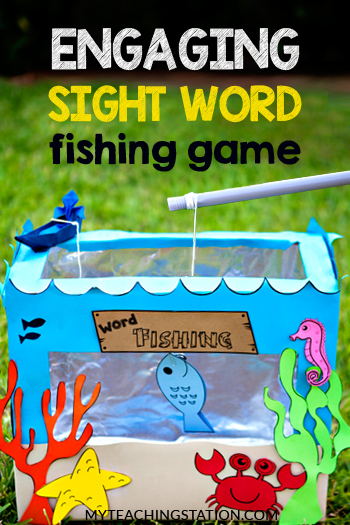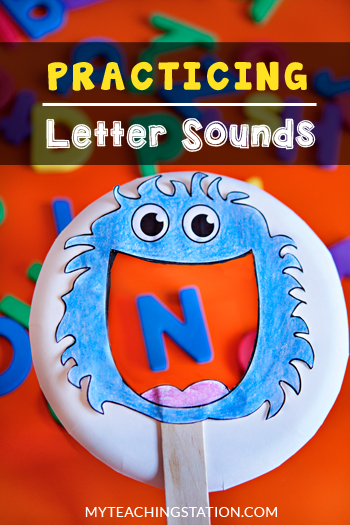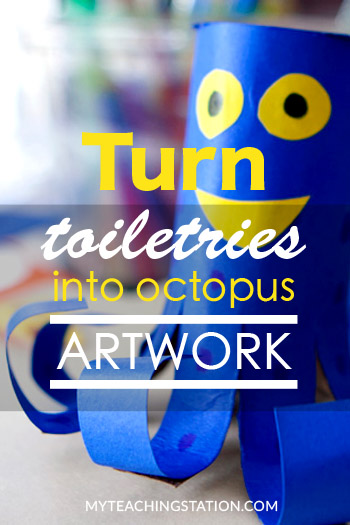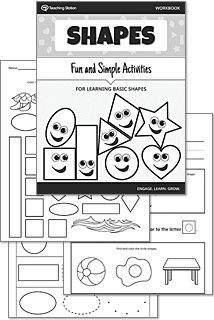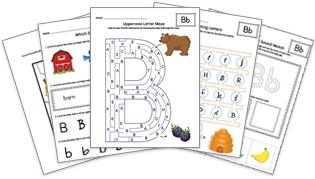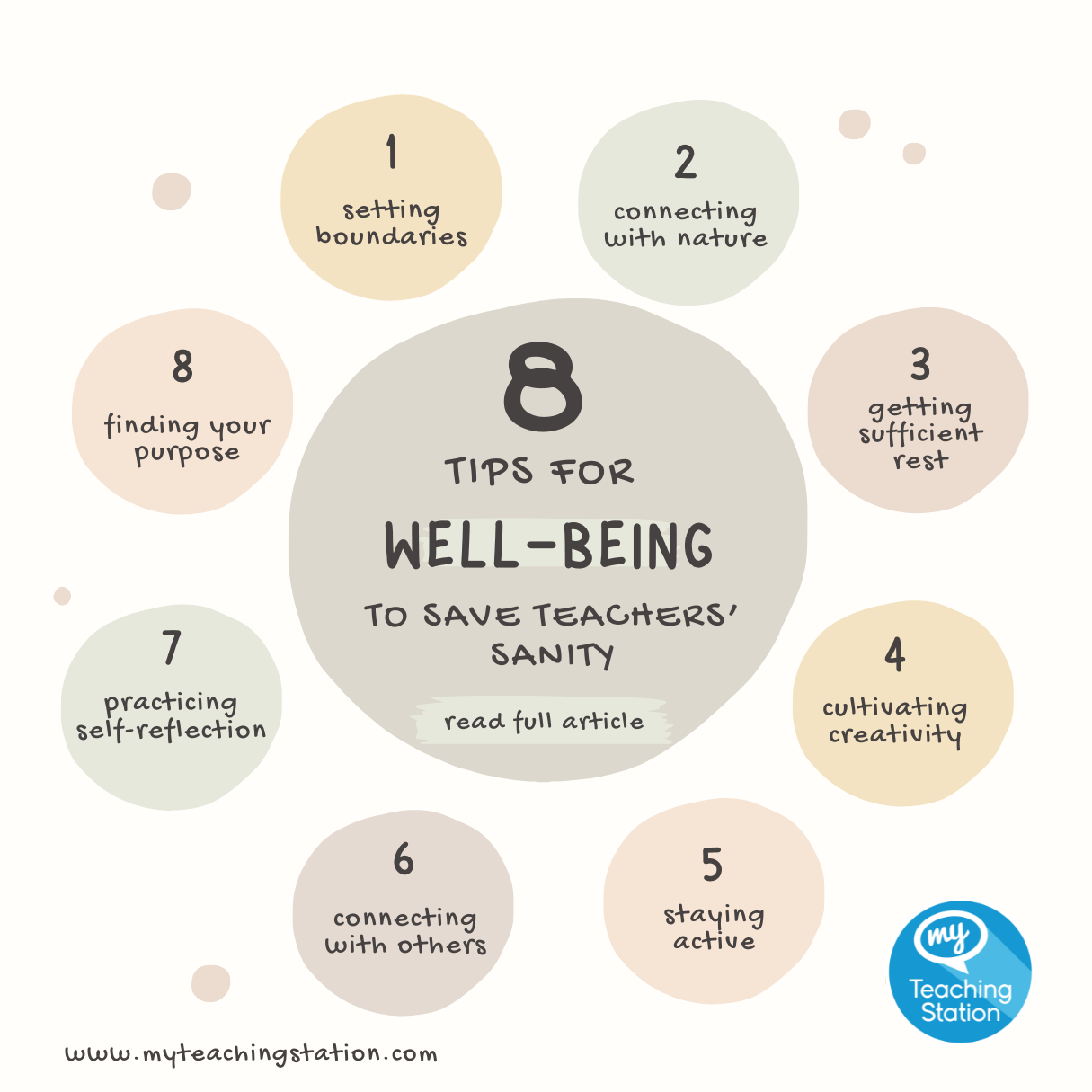
Introduction
Welcome to the dynamic world of early learning education, where shaping young minds is both a noble quest and a test of one's sanity. In this symphony of crayons, alphabet soup, and occasional chaos, the well-being of our unsung heroes—teachers, educators, and parents—takes center stage for some deserved attention.
The Crucial Role of Well-being in Early Learning
Teaching the basics of shapes, colors, and the alphabet to tiny tots might sound like child's play, but let's not kid ourselves. The early learning path is a rollercoaster ride where grown-ups navigate tantrums, sticky fingers, and the occasional existential crisis. Ensuring our educators' and parents' mental and emotional health is not just a noble goal; it's a strategic move for a less chaotic classroom and a more harmonious household.
Imagine a world where teachers are zen masters, parents are sanity superheroes, and everyone's mood is as positive as a puppy in a field of daisies. Well, folks, we're not promising a utopia, but we've got eight steps that might make the journey a tad less bumpy and much more amusing.
Introducing the Eight Essential Steps: Because Sanity Deserves a Spotlight
In the following, we reveal a playbook - a treasure map, if you will - designed to empower our beloved teachers and caretakers in the world of early education. Consider this your ultimate survival kit for those moments when you may find yourself questioning the difficult days of, "How did that happen?" or "Where did that come from?" We know it's not enough to merely weather the storm; we want to make sure you have a blast doing it. So, fasten your seatbelts as we explore a journey sprinkled with wit, wisdom, and hope. Let's go!
1. Setting Boundaries: Where Rules Meet Sanity
In the delicate dance of early learning, the first act is setting boundaries. Now, we're not suggesting you construct an impenetrable fortress, complete with a moat (although it might be tempting). It's more about drawing a line in the sand, clearly stating, "Here be the limits, tiny humans."
Think of it as establishing your own little country—let's call it "Sanity-land." In Sanity-land, nap times are sacred, and snack breaks are revered. Setting boundaries is your passport to reclaiming a bit of order in the whimsical hustle of early education.
In this enchanted realm, setting boundaries involves practical and nurturing strategies. Picture this: a designated "quiet space" for focused activities or moments of introspection. By creating this space, educators provide a haven for individual reflection and communicate the importance of concentration and self-regulation.
And when it comes to group activities, setting clear expectations during playtime becomes a comforting cornerstone. Rules for sharing toys or taking turns not only prevent outbreaks but also lay the foundation for essential social skills, fostering cooperation and mutual understanding among the tiny citizens.
Consider the daily routine as another key ingredient, where consistent schedules for meals, naps, and learning activities provide a comforting rhythm. This structure helps manage the little learners' bustling energy and improves their overall well-being and emotional stability.
In essence, setting boundaries in early education is about creating a supportive framework that allows both educators and students to thrive. These boundaries transform potential trouble into a beautiful tapestry of learning and growth in the enchanting land where nap times are sacred, snack breaks are revered, and the dance of early education unfolds with grace.
2. Connecting with Nature: Because Playgrounds Are Therapy Sessions
The next stop on our well-being tour is to reconnect with nature. Imagine yourself for a moment as a sage educator, relaxing on a blanket under the cool shade of a tree (sipping herbal tea if you'd like) and watching your young students play. Doesn't that make you want to breathe a deep breath of fresh soothing air? It's like aroma therapy but with more laughs and giggles.
Nature possesses a magical ability to soothe even the most frazzled nerves. Let's expand our outdoor curriculum with a variety of experiences to deepen the connection:
- Sensory Nature Walk:
Take your students on a sensory journey through the natural wonders around your learning space. Encourage them to explore the outdoors and listen to the symphony of nature. This hands-on experience not only engages their senses but also cultivates an appreciation for the diverse elements of the outdoors.
- Nature Art Gallery:
Transform fallen leaves, twigs, and flowers into masterpieces. Invite your students to create art using elements found in nature. This not only encourages creativity but also instills an understanding of the beauty that surrounds them.
- Birdwatching Adventures:
Turn your outdoor space into a haven for budding ornithologists. Provide bird guides and binoculars, and encourage students to observe and identify different bird species. This activity not only connects them with nature but also instills a sense of responsibility for the feathered inhabitants of their surroundings.
- Outdoor Science Explorations:
Introduce moments of mindfulness in nature. Find a quiet spot, sit together, and guide your students through a brief quiet time, encouraging them to be still in the natural surroundings. This practice helps enhance focus and also teaches the invaluable skill of appreciating the moment.
Reconnecting with nature isn't just about keeping chaos in check; it's an essential part of growth, where the great outdoors becomes an active co-teacher in shaping young minds and nurturing well-being.
3. Getting Sufficient Rest: Beauty Sleep for Educators
As we navigate the cosmos of early learning, it's time to acknowledge the superhero power of sleep. We get it; counting sheep is so last century. But consider this: a well-rested educator is practically unstoppable. Think of it as charging your mental batteries, preparing for tomorrow's epic encounters with finger paints and alphabet blocks.
Here are five benefits of having a good sleep routine:
- Better Thinking:
Sleep helps your brain work better. It makes it easier to remember things, solve problems, and make good decisions.
- Happier Feelings:
Sleeping well can make you feel happier and less worried or sad. It keeps your emotions in check.
- Healthy Body:
Sleep is like a superhero for your body. It helps your immune system (the one that fights off germs), keeps your hormones in balance, and helps your body stay fit.
- More Energy for the Day:
When you sleep enough, you have more energy for the following day. You can do things better and faster - and who doesn't need a boost when trying to keep up with our magnificent minions?
- Staying Healthy for a Long Time:
Having a good sleep routine helps you stay healthy for a long time. It lowers the chances of having serious health problems and keeps you on track to get everything you deserve in life.
So, by getting good sleep, you're not just resting; you're making your brain and body stronger and happier (what a dynamic duo)!
By crafting a peaceful sleep sanctuary and cultivating healthy sleep habits, you can unlock the power of restful and rejuvenating sleep. So, dim the lights, cue the soothing ambient tunes, and dive into the blissful abyss of dreamland—where grading papers and planning lessons are distant memories.
4. Cultivating Creativity: Because Finger Painting is a Serious Art Form
In the dazzling galaxy of early education, creativity isn't just a skill—it's a survival tool. So, strap on your imagination goggles and prepare for a journey into the whimsical realm of cultivating creativity.
Picture this: You, armed with finger paints, constructing a masterpiece that rivals the works of the greats. Creativity isn't confined to the arts; it's the secret sauce that transforms lesson plans into adventures and turns ordinary days into extraordinary tales.
Yes, creativity is a foundational characteristic in early learning spaces across the earth, which include ideas like:
- Open-Ended Art Supplies:
Provide a variety of open-ended art supplies like colored paper, markers, crayons, glue, and scissors. Allow children to explore and create without specific instructions.
- Building Blocks and Construction Toys:
Include building blocks, LEGO sets, or other construction toys. These items encourage spatial reasoning and imaginative play.
- Dress-Up Corner:
Create a dress-up corner with costumes, hats, and props. This allows children to engage in imaginative role-play and storytelling.
- Storytelling Props:
Introduce storytelling props like puppets, felt boards, or soft toys. Encourage children to create and act out their own stories.
- Nature Exploration:
Set up a nature exploration area with items like leaves, rocks, or pinecones. Children can use these natural materials in their artwork or play.
Those are fantastic for the home or classroom learning center, but what about cultivating creativity for you on a personal level?
Here's a list of ways for teachers and parents to cultivate creativity on an individual level, away from the early learning space:
- Personal Art Projects:
Engage in personal art projects, whether it's painting, drawing, or crafting. Allow yourself the freedom to create without any specific goals or expectations.
- Creative Writing or Journaling:
Start a creative writing journal or simply jot down your thoughts and ideas. Expressing yourself through words can be a therapeutic and imaginative exercise.
- Exploration of New Hobbies:
Try out new hobbies that spark your interest, such as photography, cooking, gardening, or playing a musical instrument. Exploring diverse activities can ignite creativity.
- Mindfulness Practices:
Incorporate mindfulness practices, such as silence and stretching, into your routine. These activities can clear the mind and create mental space for creative thinking.
- Reading Across Genres:
Read books, articles, or content from diverse genres and subjects. Exposure to different ideas can fuel your creativity and help you make unexpected connections.
- Attend Creative Workshops or Classes:
Enroll in workshops or classes related to your interests or in completely new areas. Learning new skills and perspectives can ignite creativity.
- Nature Connection:
Spend time in nature to rejuvenate and inspire creativity. Take walks, explore parks, or simply sit in a natural setting to connect with the environment.
- Mind-Bending Exercises:
Try exercises that challenge your perception, such as optical illusions or thought experiments. These activities can break mental patterns and stimulate creative thinking.
- Listen to Different Music Genres:
Explore various music genres. Different styles of music and tunes can evoke or prompt different emotions and inspire creative thinking.
- Photography Exploration:
Take up photography and capture the world from different angles. See new perspectives and find the beauty in everyday things that can inspire creativity.
- Celebrate Personal Achievements:
Reflect on your personal achievements and celebrate them. Recognizing your accomplishments boosts confidence and encourages a positive mindset, fostering creativity.
- Networking with Other Creatives:
Connect with other creative individuals. Attend meet-ups, join online communities, or engage in conversations with people who share similar interests.
- Visual Inspiration Boards:
Create visual inspiration boards with images, quotes, and ideas that resonate with you. Use these boards as a visual reference for sparking creativity.
- Mind Mapping Personal Goals:
Use mind maps to explore and organize your personal goals. This visual tool can help you brainstorm and connect ideas in a creative way.
- Reflection and Goal Setting:
Regularly reflect on your personal and professional journey. Set goals for personal growth and challenge yourself to think creatively about how to achieve them.
Cultivating creativity on an individual level is a deeply personal and enriching journey. By exploring personal interests, reflecting on experiences, and engaging in activities that bring joy and inspiration, individuals can tap into their creative potential. This process extends far beyond the classroom setting, allowing for continuous growth and innovation. Remember, creativity is not bound by specific spaces; it thrives wherever passion and curiosity lead the way.
5. Staying Active: Dodging Toy Cars and Jumping Hurdles
Staying active isn't just about hitting the gym; it's about navigating a minefield of toy cars, dodging miniature obstacles, and performing interpretative dances to capture the attention of your little audience.
Picture this: You, the fearless educator, engaging in a game of educational hopscotch, seamlessly blending physical activity with lesson plans. Staying active is the secret sauce to keeping both your sanity and those tiny tots moving in the right direction.
Here are five practical ways to stay active both in and out of the classroom:
- In-Class Brain Breaks:
Incorporate short, active breaks during class to keep everyone energized. This could be a quick stretch, a dance break, or even a simple stretching routine. These moments not only boost physical activity but also help improve focus and attention.
- Outdoor Learning Activities:
Take the classroom outside whenever possible. Conduct lessons or activities in the schoolyard or nearby park. Fresh air and a change of scenery can make learning more engaging, and students get the added benefit of being active.
- Active Learning Games:
Integrate active learning games into lessons. For example, use educational games that involve movement, like a math scavenger hunt or a spelling relay. This adds a fun element to learning while keeping everyone active.
- Fitness Challenges:
Organize class-wide or school-wide fitness challenges. This could be a step challenge, where students and teachers track their daily steps or a friendly sports competition. It encourages a sense of community while promoting physical activity.
- Encourage Extracurricular Activities:
Support and promote extracurricular activities that involve movement. This could be joining a sports team, dance club, or even a school fitness program. These activities keep students active and provide a sense of belonging.
Just remember, staying active isn't just about keeping your body in tip-top shape; it's also the secret sauce for infusing your classroom with positive emotions and enough energy to power a rocket. Let's face it, a little laughter and movement can turn any lesson into a lively adventure.
Incorporating these ideas is like adding a sprinkle of fun to your teaching recipe. So, gear up for a high-energy classroom routine where learning happens with worksheets and under the Big Circus Tent (or imaginary zoo)! Let the active learning extravaganza begin!
6. Connecting: Forming Allstar Alliances
Forming solid relationships and connections becomes a required survival strategy as we traverse the pre-k and kindergarten terrain. Connecting with fellow educators, parents, and even the occasional class pet creates a support network that's more valuable than a lifetime supply of gold star stickers.
Think of it as a strategic alliance in a game of chess. Swap stories, share battle tactics, and revel in the camaraderie that comes with facing the unique challenges of early education. Because, let's be honest, who else is going to understand the triumphs and tribulations of teaching ABCs and 123s?
Here are three ways for early educators to stay connected and build helpful alliances:
- Professional Development Networks:
Join professional development networks and organizations related to early childhood education. Attend conferences, workshops, or online events to connect with fellow educators. These platforms provide opportunities to share experiences, gain insights, and build a supportive professional community.
- Collaborative Planning Sessions:
Engage in collaborative planning sessions with colleagues. Regularly schedule meetings to discuss lesson plans, share teaching strategies, and address challenges. These sessions not only foster teamwork but also provide a platform for educators to learn from each other's experiences.
- Parent-Teacher Partnerships:
Cultivate strong partnerships with parents. Regularly communicate with parents through newsletters, meetings, or digital platforms. Actively involve them in their child's learning journey, seeking their input and feedback. Building positive relationships with parents creates a supportive alliance for the child's overall development.
Dive into the world of professional networks, team up with your awesome colleagues, and forge connections with parents like the superhero educator you are!
By doing this, you're not just building alliances; you're creating a powerhouse of support and growth for both your classroom and your own professional journey. It's like assembling an Avengers team but for education, where everyone plays a crucial role in making the learning environment extraordinary. So, suit up, collaborate, and watch your teaching superpowers reach new heights!
7. Practicing Self-Reflection: The Zen Retreat and Balancing Act
In the cosmic ballet of early education, self-reflection emerges as the philosopher's stone, turning everyday chaos into teachable moments. Imagine this: You, the guru educator, sitting cross-legged on a tiny chair, pondering the mysteries of why glue sticks disappear faster than you can say "ABC."
Self-reflection isn't about gazing into an existential abyss. It's about pausing, taking a deep breath, and pondering the journey so far. What worked? What could use a little tweak? It's the mindful GPS guiding you through the unpredictable terrain of early education.
Use this list of self-reflection ideas to create your own routine:
- Journaling:
Set aside time regularly to write about your experiences, thoughts, and feelings. Reflect on the highs and lows of your day, your achievements, and areas for growth.
- Goal Assessment:
Review your short-term and long-term goals. Are they still aligned with your aspirations? Consider adjusting or refining them based on your current priorities.
- Strengths and Weaknesses:
Identify your strengths and weaknesses. Acknowledge areas where you excel and those that may need improvement. Reflect on how you can leverage your strengths and work on developing weaker areas.
- Learning Moments:
Recollect moments where you learned something new. It could be a success or a challenge. Consider how these experiences contribute to your personal and professional growth.
- Feedback Review:
Reflect on feedback received from others. Whether it's from colleagues, supervisors, or friends, assess how you've applied constructive feedback and identify areas for further improvement.
- Balancing Act:
Evaluate your work-life balance. Are you allocating enough time to work, personal interests, and self-care? Reflect on adjustments you can make to achieve a more balanced lifestyle.
- Mindfulness Practices:
Incorporate mindfulness into your routine. Reflect on how practices like meditation or deep breathing impact your overall well-being and ability to stay present in the moment.
- Values Alignment:
Consider your core values. Are your actions and decisions aligned with your values? Reflect on any adjustments needed to ensure that your life reflects what truly matters to you.
- Relationship Dynamics:
Reflect on your relationships, both personal and professional. Consider the quality of your connections and whether there are any adjustments or improvements you'd like to make.
- Gratitude Check-In:
Take a moment to express gratitude. Reflect on the positive aspects of your life, the people you appreciate, and the experiences that bring you joy.
- Time Management:
Evaluate how you manage your time. Are there areas where you could be more efficient? Reflect on strategies to prioritize tasks and maintain productivity.
- Emotional Check-In:
Check in with your emotions. Reflect on how you're feeling and why. Consider practices, such as mindfulness or talking to a trusted friend, to manage and understand your emotions.
Remember, self-reflection is a personal journey, and these ideas can be adapted to suit your preferences and goals. Regular self-reflection is a valuable tool for personal development and continuous improvement.
8. Finding Your Purpose: Unveiling the Educational Odyssey
As our well-being journey nears its finale, we delve into the profound realm of finding your purpose. This isn't about unlocking the secrets of the universe but rather understanding why you brave the chaos of tiny tornadoes armed with crayons and curiosity.
Imagine this: You, the educator on a quest, uncovering your unique purpose within the hallowed halls of early learning. It's about aligning your passion with your profession, transforming the daily grind into a meaningful odyssey.
Use this list of ways to explore your purpose as an early learning educator on both professional and personal levels:
Professional Exploration
- Set Professional Goals:
Define your professional goals as an educator. Consider what impact you want to have on your students and the education community.
- Reflect on Teaching Philosophy:
Reflect on your teaching philosophy. Clarify your beliefs about education, learning, and your role as an educator.
- Seek Feedback:
Request feedback from colleagues, supervisors, and parents. Understand how your teaching style and methods are perceived and pivot as needed.
- Professional Development Opportunities:
Attend workshops, conferences, and training sessions. Stay updated on the latest educational trends and methodologies to enhance your skills.
- Collaborate with Peers:
Collaborate with fellow educators. Engage in collaborative projects, share ideas, and learn from each other's experiences.
- Mentorship Programs:
Consider participating in mentorship programs, either as a mentor or mentee. Building such professional relationships can provide valuable insights.
- Join Professional Organizations:
Become a member of professional organizations related to early childhood education. Networking with peers can broaden your perspective.
Personal Exploration
- Identify Personal Values:
Identify your personal values and how they align with your role as an educator. This clarity can guide your decisions and actions.
- Connect with Passion:
Connect with your passion for teaching. Identify specific aspects of early learning that truly inspire and motivate you.
- Engage in Self-Reflection:
Practice regular self-reflection. Consider your strengths, areas for growth, and the impact you aspire to have on children's lives.
- Explore Interests Outside Teaching:
Explore hobbies and interests outside of teaching. Finding joy in personal pursuits can rejuvenate your enthusiasm for education.
- Attend Personal Development Workshops:
Attend personal development workshops. These can focus on aspects like work-life balance, stress management, and personal growth.
- Balance Personal and Professional Life:
Strive for a healthy balance between your personal and professional life. Understand how both aspects complement each other.
- Connect with Students and Families:
Develop meaningful connections with your students and their families. Understanding their perspectives can deepen your sense of purpose.
Remember, exploring your purpose is an ongoing journey that evolves with your experiences and insights. Combining professional and personal exploration will provide a holistic understanding of your role as an early learning educator.
Conclusion: Well-being, Wisdom, and a Sprinkle of Stardust
As our time together exploring the universe of early learning education draws to a close, it's time to gather the stardust of well-being, wisdom, and a pinch of humor we've encountered along the way.
In this whirlwind tour, we've explored the art of setting boundaries, finding solace in nature, embracing the rejuvenating power of rest, and even unleashing our inner Picasso through cultivating creativity. We've jumped hurdles, formed alliances, and dived into the introspective sea of self-reflection. And let's not forget the grand finale—the quest to unveil our unique educational purpose.
Well-being is Your Trusted Companion
The importance of well-being for teachers, educators, and parents in early learning education cannot be overstated. Like cosmic dancers, they pirouette through alphabet challenges, dodge the chaotic meteor shower of art supplies, and waltz through the ever-changing rhythms of young minds.
As we bid adieu to this cosmic ballet, let's carry the lessons of laughter, camaraderie, and self-discovery. Well-being isn't just a destination; it's a continuous journey—a marathon where every step, no matter how small, is a victory.
May Your Well-being Shine Bright
Dear beloved My Teaching Station Community, whether you're a seasoned educator, a tireless parent, or an adventurous soul navigating both realms, may your well-being shine as bright as a constellation in the night sky. In this delightful symphony, let laughter be your melody, wisdom your guiding star, and may the magic of early education continue to unfold in the most enchanting ways.
Remember: the realm of early learning education resembles a rich tapestry crafted with threads of passion, resilience, and a hint of whimsy. Until our paths cross anew beneath the sparkling lights of knowledge, continue to dance, continue to laugh, and may your journey through the cosmos be adorned with profoundly satisfying moments of growth.
